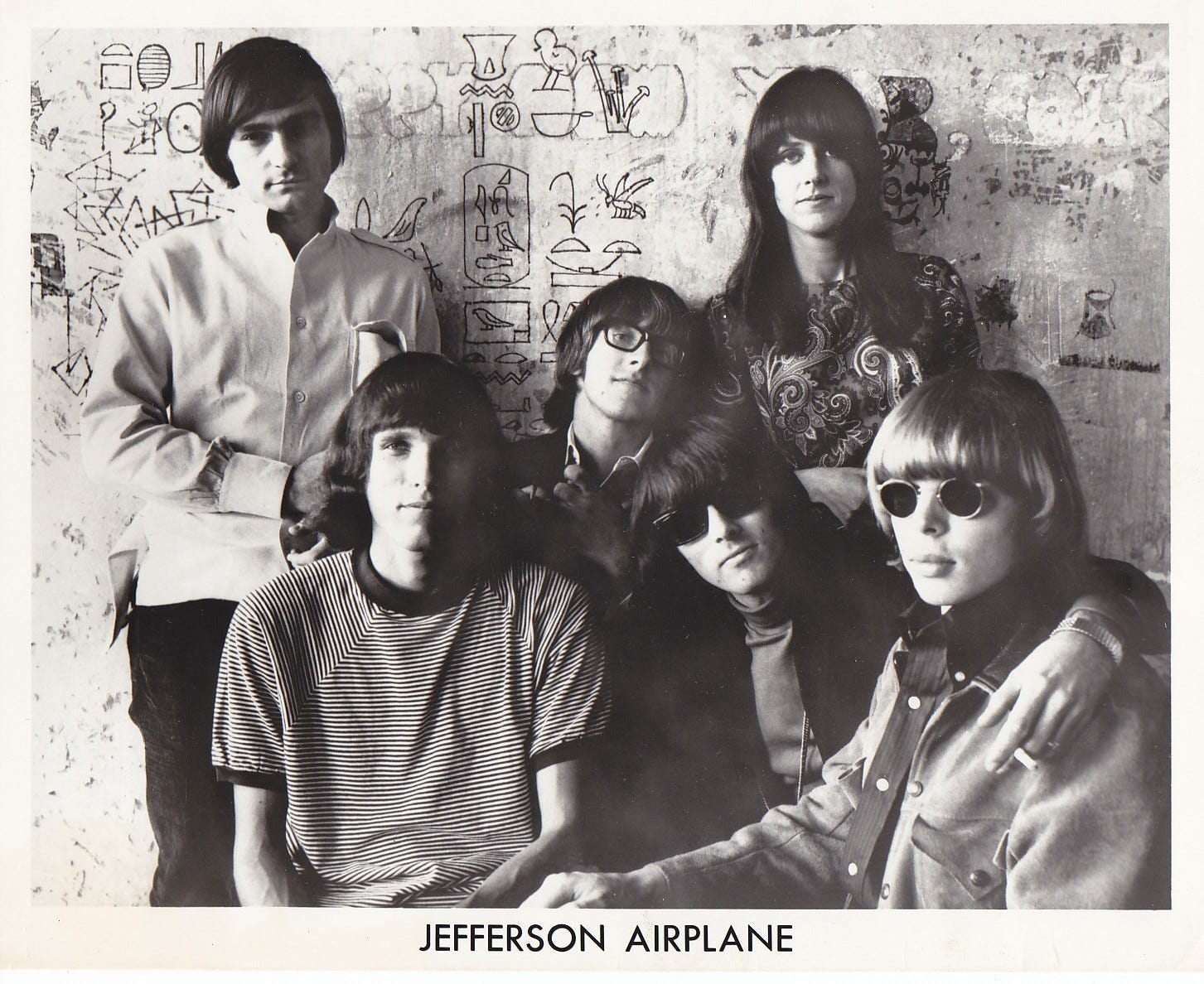Jorma Kaukonen on the Jefferson Airplane and Psychedelic 1960s
A Transcription of Our 1996 “Guitar Player” Interview

During the 1960s Jorma Kaukonen was among the pioneers of psychedelic music. His electrifying guitar playing on Jefferson Airplane’s Surrealistic Pillow – especially on the Top-10 single “Somebody to Love”– became part of the soundtrack of the Summer of Love era and helped define the San Francisco sound. Guitarists also revere Jorma for another track on that album: His beautiful acoustic instrumental “Embryonic Journey” introduced a generation of fingerpickers to dropped-D tuning and inspired many people – myself included – to buy their first guitars.
Kaukonen originally played country blues and folk. He took up electric guitar in 1965 after forming a band with Paul Kantner, Marty Balin, Signe Anderson, and Skip Spence. Jorma christened the lineup Jefferson Airplane and brought in his longtime pal Jack Casady to play bass. The group made its debut on August 13, 1965, playing the opening night at the Matrix. Two months later, they played San Francisco’s first important rock and roll “dance concert,” appearing with the Charlatans and Great Society at Longshoreman’s Hall. The band’s debut album, 1966’s folk-rock-oriented Jefferson Airplane Takes Off, featured original vocalist Signe Anderson. Grace Slick, formerly of Great Society, replaced Signe on 1967’s Surrealistic Pillow. This album was quickly followed by the more experimental After Bathing at Baxter’s. Jefferson Airplane released a half-dozen more LPs before disbanding circa 1972. By then Kaukonen and Casady were devoting most of their time to their side band, Hot Tuna, which had issued its self-titled debut album two years earlier. Since then, Jorma has continued to perform with Hot Tuna and as a solo artist.
While doing the research for Guitar Player’s February 1997 “Psychedelia” cover story, I reached out to some of the guitarists from the original San Francisco scene: Country Joe McDonald, Barry “The Fish” Melton, Bob Weir, Sam Andrew, and Jorma. When Jorma and I spoke in November 1996, he was in southern Ohio, setting up his Fur Peace Ranch guitar camp; more about this at interview’s end. Here’s our conversation.
###
Barry Melton recently told me that the 1960s music scene in San Francisco could have happened without the rise of psychedelic drugs.
I think there is some truth in that, but it wouldn’t have been called psychedelic music then. Of course, psychedelic music has very little to do with psychedelic drugs today – or in my circle it does! I don’t know. I think there’s some truth in what he says. Obviously, I’ve certainly done my share of substances over the years, and it has made me a lot of what I am today, even though I don’t do anything today. Sometimes I think I’d be in the same place, but I really don’t know. That’s a good point. Let’s think about it as this conversation goes on.
Who were the earliest psychedelic San Francisco bands to record?
Ooh, truly psychedelic? Because I don’t think the first Airplane album was psychedelic. Hmm.
Some feel the first recording is the Country Joe and The Fish EP with “Bass Strings” and “Section 43.”
I think there’s some truth in that. Yeah. In my opinion today, the psychedelic Jefferson Airplane album would be Baxter’s, just because of a lot of the jamming. You know, we were getting into the technology, we were learning how to play electric instruments in the style that became our sort of benchmark. That’s the first album where I personally – and I think Jack too – really started to stretch out.
In a very short period, you went from playing acoustic folk and country blues to raging psychedelic music. What happened?
Well, there was a lot of synchronicity there – and opportunity. All of a sudden I went from being an acoustic guitar player to learning how to play the electric guitar. I was given the opportunity for on-the-job training. And the spirit and everything was pretty much left up to us – you could play what you wanted to. Like, for example, there’s a moderately psychedelic solo on “Somebody to Love.” And people say, “How did you figure that out?” And my answer is, “I didn’t know any better.” You know, I really couldn’t figure out how to do a lot of the stuff that I’d heard people like Mike Bloomfield do because I didn’t play that way. And I just dicked around until that came out. And that’s really what it is. Later on, I sort of refined what it was, but there was a lot of accidental creativity that happened because nobody was there to say, “Here’s a three-minute song. Here’s what you’ve got to do: You have to do an intro and an outro and a solo.” We just did what we wanted to do.
When did massive volume come in? By Baxter’s, you were playing through four Fender Twin amps, right?
Yeah, yeah. We escalated quickly. Well, of course now with the technology of electric guitars being the way it is, you can get all that overdriven stuff at acoustic volumes. But in those days, it was before all the master volumes and fuzz boxes and all that stuff. Well, they had fuzz boxes, but they really sucked. And in order to do it, you had to use volume. And also, if you’ll recall back then, the P.A.’s in venues were slim to none, so they could barely handle the vocal and some of the drums. Everything else was pretty much up to the instrumentalists. So it was just a necessity.
Keep reading with a 7-day free trial
Subscribe to Talking Guitar ★ Jas Obrecht's Music Magazine to keep reading this post and get 7 days of free access to the full post archives.


